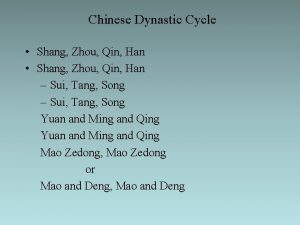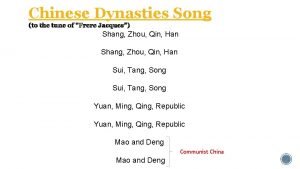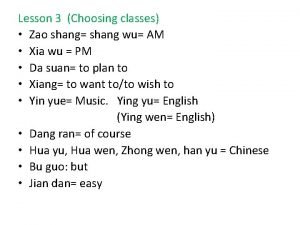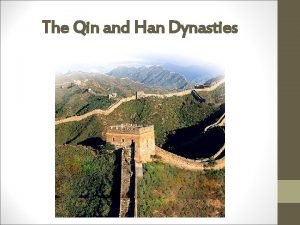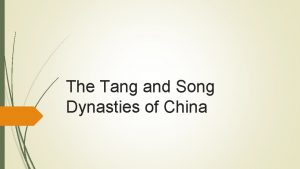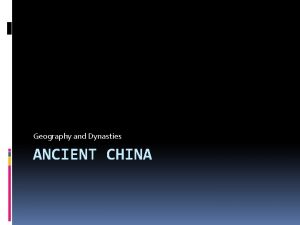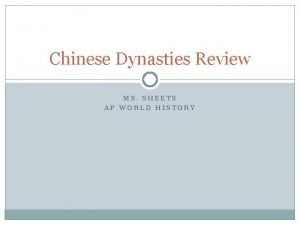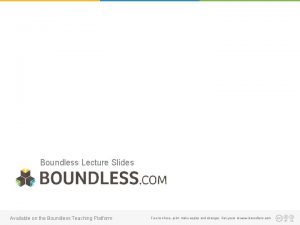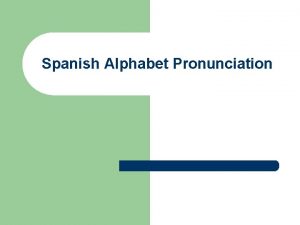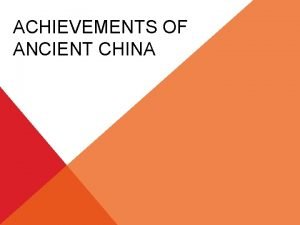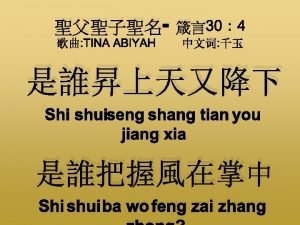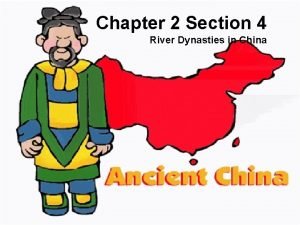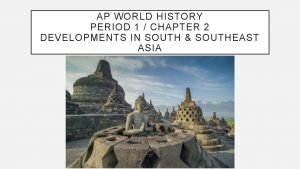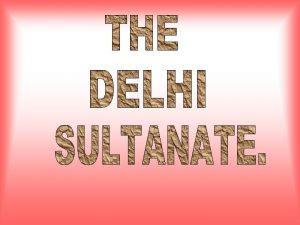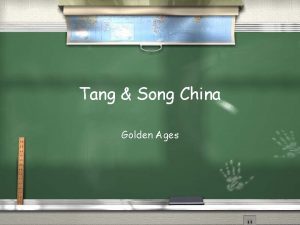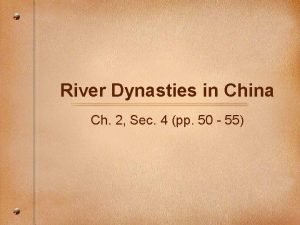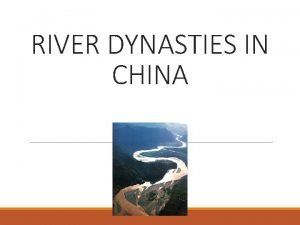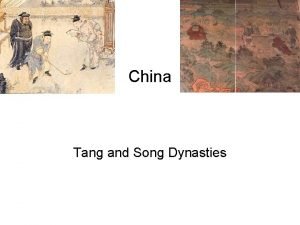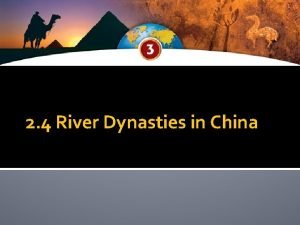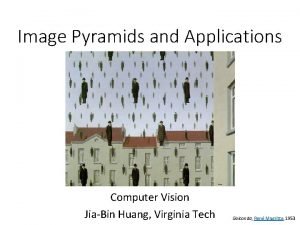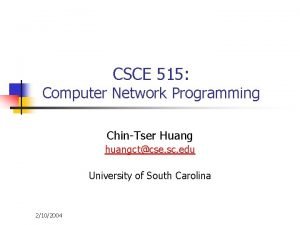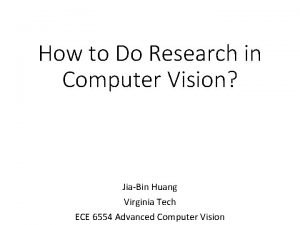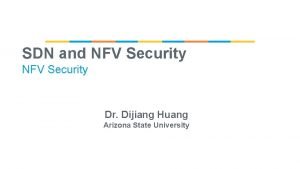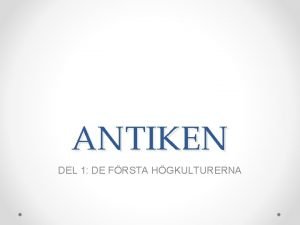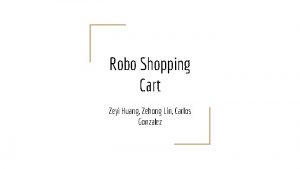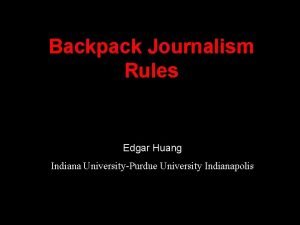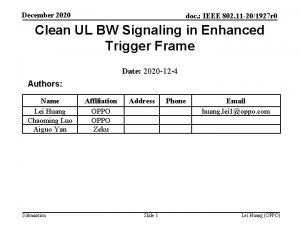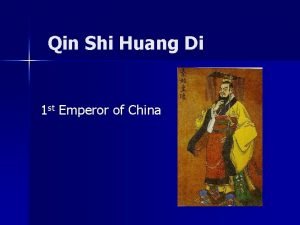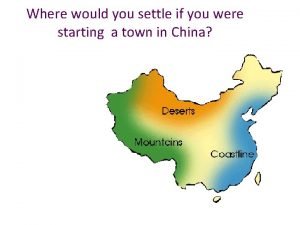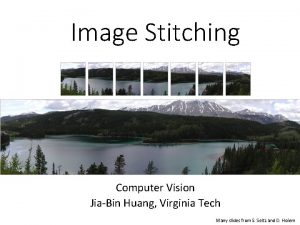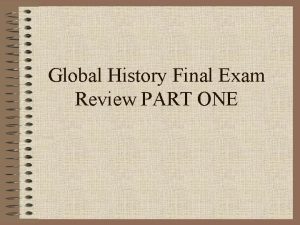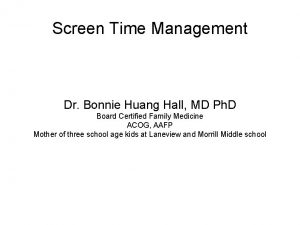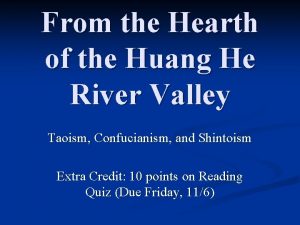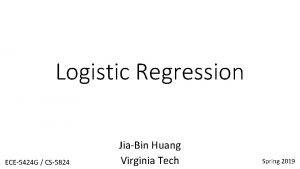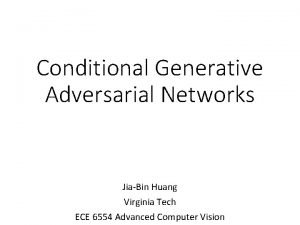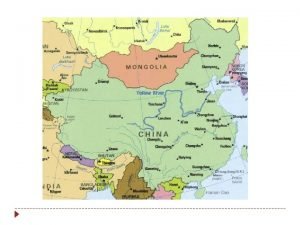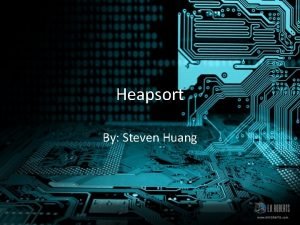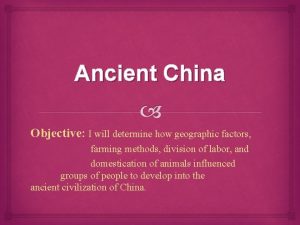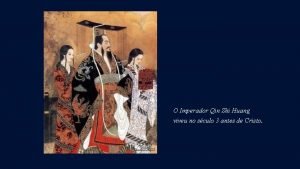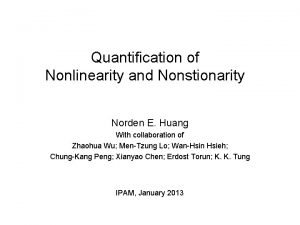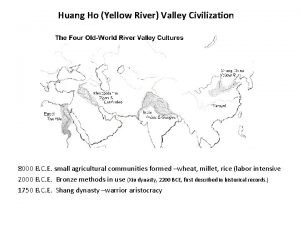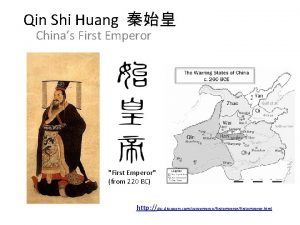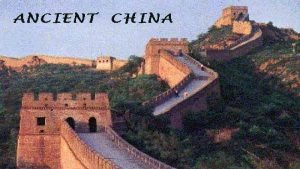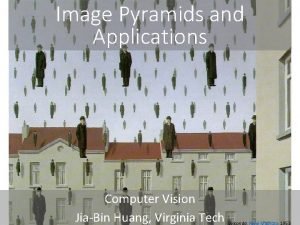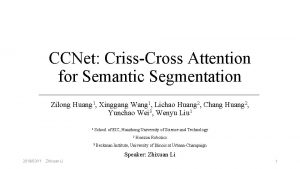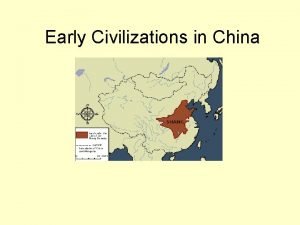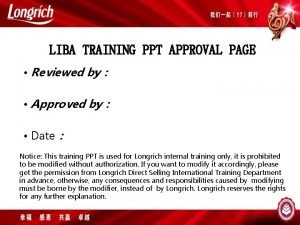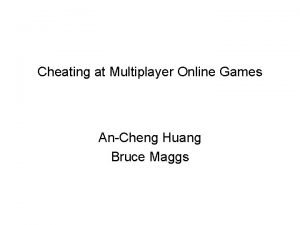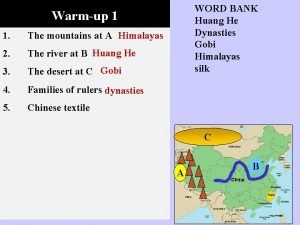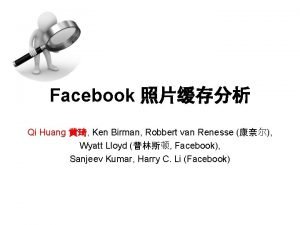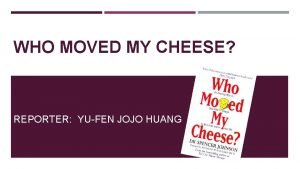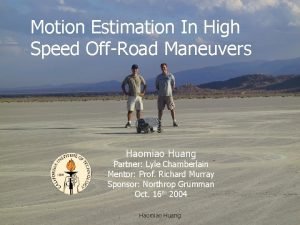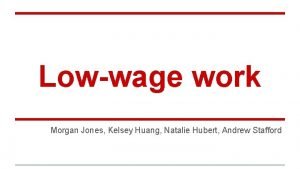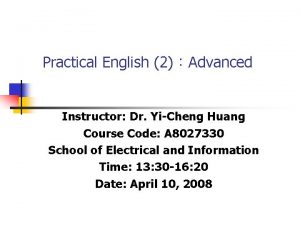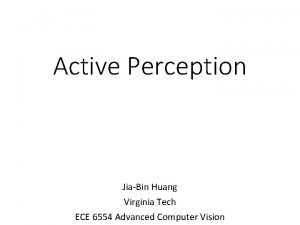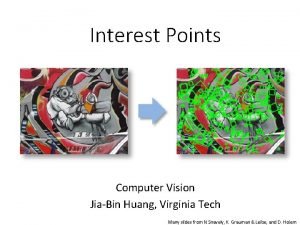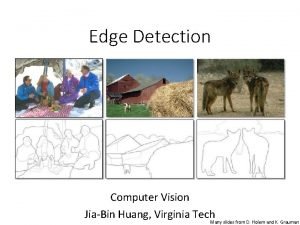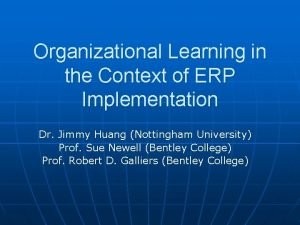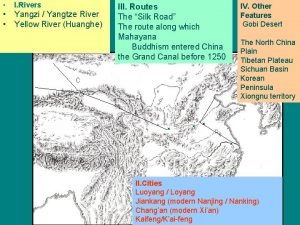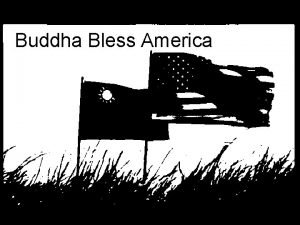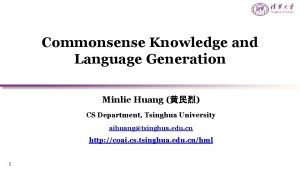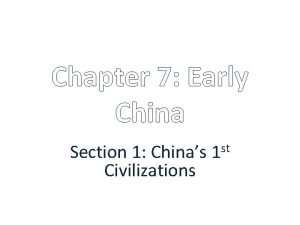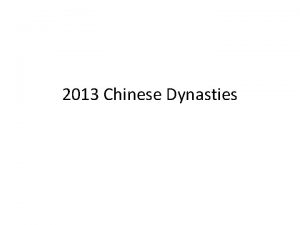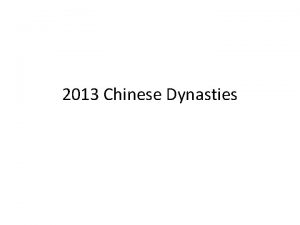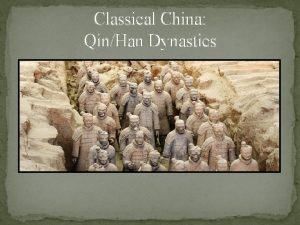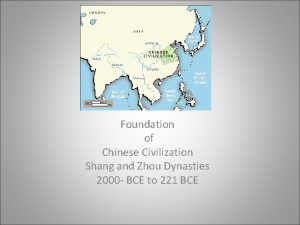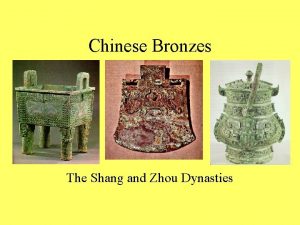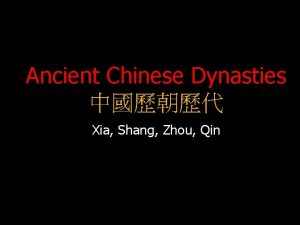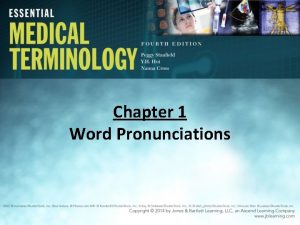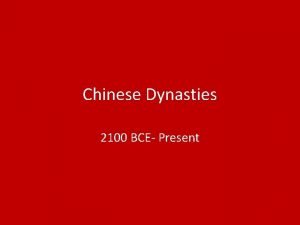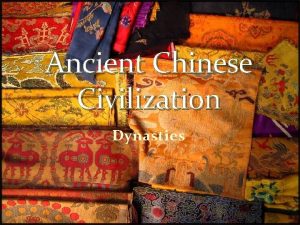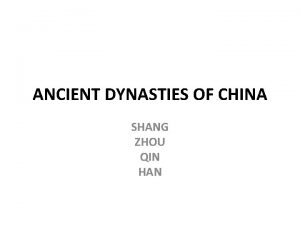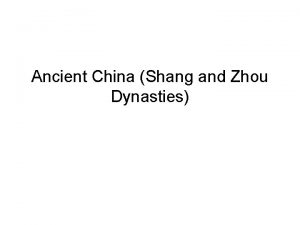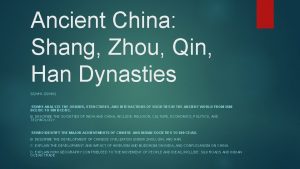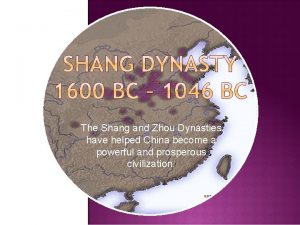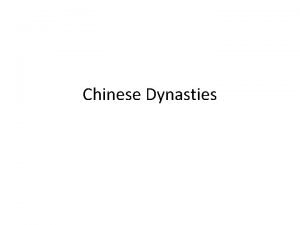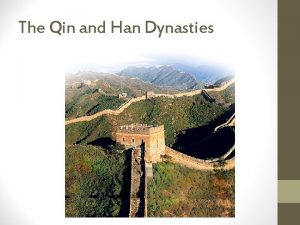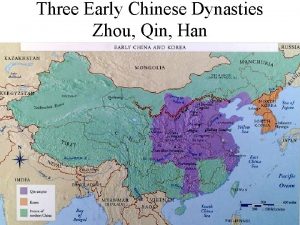2013 Chinese Dynasties Pronunciations Huang He Shang Zhou














![The MONGOLS [“Golden Horde”] z Temujin --> Genghis Khan [“Universal Ruler”] – 1162 - The MONGOLS [“Golden Horde”] z Temujin --> Genghis Khan [“Universal Ruler”] – 1162 -](https://slidetodoc.com/presentation_image_h/169f0bcf8b40b5d676eaa6f91e542836/image-15.jpg)

![The MONGOLS [“Golden Horde”] z Genghis Khan’s Tax Laws: – If you do not The MONGOLS [“Golden Horde”] z Genghis Khan’s Tax Laws: – If you do not](https://slidetodoc.com/presentation_image_h/169f0bcf8b40b5d676eaa6f91e542836/image-17.jpg)



![Yuan (Mongol) Dynasty, 1279 -1368 C. E. z Kublai Khan [r. 1260 -1294] – Yuan (Mongol) Dynasty, 1279 -1368 C. E. z Kublai Khan [r. 1260 -1294] –](https://slidetodoc.com/presentation_image_h/169f0bcf8b40b5d676eaa6f91e542836/image-21.jpg)
































![Admiral Zheng He’s Voyages z First Voyage: 1405 -1407 [62 ships; 27, 800 men]. Admiral Zheng He’s Voyages z First Voyage: 1405 -1407 [62 ships; 27, 800 men].](https://slidetodoc.com/presentation_image_h/169f0bcf8b40b5d676eaa6f91e542836/image-54.jpg)





















- Slides: 75

2013 Chinese Dynasties

Pronunciations • • Huang He Shang Zhou Loess Henan Wei Qin hwahng he shong Joe less hey – nahn way chin

Key Terms…. A Dynasty is a line of rulers that come from the same family An aristocrat is a noble, or upper class person, whose wealth comes from their land

China’s history is usually divided into time periods based on the rule of different dynasties. A ‘dynasty’ is a ruling family that passes the power to rule down through the generations. These rulers were thought to be ‘divine’, or actual gods, and thus were obeyed without question.

Mongols and Genghis Khan Yuan Dynasty

China Under Foreign Rulers • Twice in its dynastic history China was under foreign rule: - Yuan dynasty – Mongols - Qing dynasty – Manchus • The Mongols initially tried to rule China as their own tribal society. Eventually, they adopted China’s political system, the civil service exams, and Confucian philosophy.

Yuan Dynasty 1, 271 – 1, 368 A. D. In 1206, Genghis Khan united the entire Mongol tribes and extended his power over all of North China. The conquest of the Southern Song was not completed until 1279, after Kublai Khan, his grandson, had succeeded to Mongol leadership. Genghis Khan


The Extent of the Mongol Empire

Mongols • Nomadic people • Horseback- primary form of travel Genghis Khan- elected ruler of Mongols, 1206 Created largest empire in history! Used terror to conquer people Professional, organized army

The Mongols • The Mongols lived in an area north of China called Mongolia. • They lived in tribes, or groups of related families.

• They were nomadic herders who grazed their animals on the steppes, wide, rolling grassy plains. • The Mongols were well known for their ability to ride horses well and wage war.

MONGOL WARRIORS

• At a meeting of Mongol leaders in 1206, a man named Temujin was elected Genghis Khan, which means strong ruler.
![The MONGOLS Golden Horde z Temujin Genghis Khan Universal Ruler 1162 The MONGOLS [“Golden Horde”] z Temujin --> Genghis Khan [“Universal Ruler”] – 1162 -](https://slidetodoc.com/presentation_image_h/169f0bcf8b40b5d676eaa6f91e542836/image-15.jpg)
The MONGOLS [“Golden Horde”] z Temujin --> Genghis Khan [“Universal Ruler”] – 1162 - 1227 – from the steppe [dry, grass-covered plains of Central Asia]

You better study for the test… Don’t make me bring the terror! • Genghis Khan built the Mongol Empire using a well-trained army to invade major civilizations. • Mongol warriors were known for their cruelty and use of terror, or violent acts used to scare people.
![The MONGOLS Golden Horde z Genghis Khans Tax Laws If you do not The MONGOLS [“Golden Horde”] z Genghis Khan’s Tax Laws: – If you do not](https://slidetodoc.com/presentation_image_h/169f0bcf8b40b5d676eaa6f91e542836/image-17.jpg)
The MONGOLS [“Golden Horde”] z Genghis Khan’s Tax Laws: – If you do not pay homage, we will take your prosperity. – If you do not have prosperity, we will take your children. – If you do not have children, we will take your wife. – If you do not have a wife, we will take your head. z Used cruelty as a weapon some areas never recovered from Mongol destruction!

Kublai moved the capital to Beijing, adopted much of the Chinese administrative system. The Central Asian trade routes were secured. Traffic from West to East increased. Missionaries and traders came to China, bringing new ideas, techniques, foods, and medicines. Marco Polo arrives to write about the splendor of the Mongol Empire. He wrote of his extensive travels throughout Asia on behalf of the Khan, and their eventual return after 15, 000 miles and 24 years of adventures.

Kublai Khan – Yuan Dynasty • Kublai Khan – grandson of Genghis Khan • Becomes Mongol emperor in 1260 • Conquers all of China in 1279, uniting China for the first time in 300 years. • Yuan Dynasty only lasts until 1368, but is very important.

Yuan Dynasty • Kublai Khan very good ruler for China • Kublai Khan moved capital from Mongolia to modern day Beijing, China • Mongols kept separate identity from the Chinese – lived apart and had different laws. • Tolerated Chinese culture and made few changes to government system
![Yuan Mongol Dynasty 1279 1368 C E z Kublai Khan r 1260 1294 Yuan (Mongol) Dynasty, 1279 -1368 C. E. z Kublai Khan [r. 1260 -1294] –](https://slidetodoc.com/presentation_image_h/169f0bcf8b40b5d676eaa6f91e542836/image-21.jpg)
Yuan (Mongol) Dynasty, 1279 -1368 C. E. z Kublai Khan [r. 1260 -1294] – Pax Mongolica [“Mongol Peace”] • Tolerated Chinese culture but lived apart from them. • No Chinese in top govt. posts. • Believed foreigner were more trustworthy. • Encouraged foreign trade & foreign merchants to live and work in China. ü Marco Polo

Yuan Dynasty & Trade • Open up China to more trade and Western contact • Marco Polo – Young Venetian who lived in Khan’s court for 17 years. His travel journal (1271 -1295) became hugely popular book. • First time most Europeans had been exposed to Chinese culture, like silk, gunpowder, playing cards, porcelain, printing, the magnetic compass, and paper money. • Death of Kublai Khan and high taxes doomed the Yuan dynasty.

Kublai Khan and Marco Polo 1215 -1294 1254 -1324

Marco Polo (1254 -1324) z A Venetian merchant. z Traveled through Yuan China: 1271 -1295 – “Black Stones” [coal] – Gunpowder. – Noodles.

Marco Polo’s Travels

• Marco Polo at the Mongol Court – Venetian trader, Marco Polo, visits China in 1275. – Polo returns to Venice in 1292; tells stories of what he saw in China. • Fabulous cities, fantastic wealth • Burning “black stones (coal) to heat Chinese homes • Kublai Khan’s government and trade in Beijing – These stories were gathered in a book, but most readers doubt its truth.

Government by Foreigners: Mongol Rule • Whom did Kublai Khan choose to fill important government positions? – Relatives, other Mongols, & trusted foreigners • What happened to Chinese scholars during the Mongol rule? – Worked only as teachers & minor government officials Revival of the Civil Service System • How did hiring scholars help China? – Focused on moral behavior, justice, kindness, loyalty to the emperor, proper conduct, & the importance of family – Made sure all officials were trained & talented & allowed the hardworking from all social classes to succeed • Who did hiring scholars hurt China? – People who knew science, math, or engineering were kept out of government – Little respect for merchants, trade & business not encouraged due to Confucianism

Yuan Dynasty, 1279 -1368 C. E. z The Black Plague was spread by the Mongols in the mid-14 c. z Sent fleets against Japan. – 1281 150, 000 warriors – Defeated by kamikazi [“winds of the gods”] z Kublai Khan experienced several humiliating defeats in Southeast Asia late in his life.

However, discontent was growing in China. The Chinese resented Mongol’s restriction against the Chinese holding important offices. By the 1350 s several major rebel leaders had emerged.

The End of Mongol Rule • Declining Power – Failed expeditions to Southeast Asia show weakness of Yuan Dynasty. – High taxes cause resentment. • Yuan Dynasty Overthrown – Kublai dies in 1294; successors are weak. – In 1300 s, rebellions break out, leading to formation of Ming Dynasty.

End of Mongol Empire • Decline of the Mongol Empire – Mongol rule collapses in Persia in the 1330 s; in Central Asia in the 1370 s. – By the end of the 1300 s, only Mongol rule in Russia remains, the Golden Horde.

Timeline of China’s Dynasties, 500 -1500

Ming Dynasty

Yuan Mandate of Heaven lost A Ming legend tells of farmers digging along the Huanghe River finding a statue with only one eye and the inscription "Do not despise this oneeyed statue: it will be the herald of rebellion all throughout the empire. ” Famine, floods, rebellions all made the inscription ring true: the Mongols had lost the Mandate of Heaven, the t'ien ming Revolution had begun Hongjinjun (literally “army with red scarf in the head”) peasant army was one of the important powers in overthrowing the Yuan Emperor Ming China 1368 - 1644

China’s last native imperial dynasty!

The Ming Dynasty In 1279 the Mongol leader Kublai Khan conquered China and founded the Yuan dynasty. After his death in 1294, the Yuan dynasty weakened. This weakness, combined with Chinese resentment of Mongol rule, made China ripe for rebellion— and the rise of a new dynasty. China under Ming Rule Rebuilding China • 1368, peasant named Zhu Yuanzhang, rebel army, overthrew last Mongol emperor • During this time China’s rulers gained control of Korea, Mongolia, parts of Central, Southeast Asia • Zhu took name Hongwu, “vastly martial, ” founded Ming dynasty • Having expelled Mongols, Hongwu worked to rebuild China • Ming means “brilliant”; dynasty lasted nearly 300 years, until 1644 • Reduced taxes, improved trade, agriculture, increased stability In addition, Hongwu worked to eliminate Mongol influences and revive traditional Chinese values and practices, like Confucian principles.

Values, Traditions • To obtain government officials educated in Confucian ideas, Hongwu restored, improved civil service examination system • To root out corruption, increased influence of censors, officials who monitored government Expanded Power • Hongwu also greatly expanded power as emperor • Did away with positions of some high level officials, took over more control of government • As result, Ming emperors more powerful than in previous dynasties • Eliminated anyone challenging authority; killed thousands of rivals

Yonglo • In 1398 Hongwu died • Following power struggle, son Yonglo became emperor – Ruled from 1402 until 1424 – Moved Ming capital to Beijing, in northeast China – Built vast imperial city at center of Beijing – City complex became known as Forbidden City because most people forbidden from entering

Ming Dynasty 1368 – 1644 AD In the 1360 s, a former Buddhist monk Zhu Yuan Zhang successfully extended his power throughout the Yangtze Valley. In 1371, while the Mongol commanders were paralyzed by internal rivalries, he marched north and seized Beijing. The Mongols withdrew to Mongolia and from there continued to harass the Chinese. Between 1405 and 1433, the Ming government sponsored seven naval expeditions. Ming’s Emperor Yongle intended to establish a Chinese presence and impose imperial control over trade.

During the first quarter of the 15 th century, the Chinese fleet sailed the China seas and the Indian Ocean, reached as far as the east coast of Africa. Toward the late Ming Dynasty, long wars with the Mongols, incursions by the Japanese into Korea, weakened Ming rule, which result in alien takeover. In 1644 the Manchu tribe took Beijing and establishing the last imperial dynasty.

The Forbidden City: China’s New Capital

The Civil Service Exam • With all its imperfections, the exam: - provided for more efficient government - more opportunity for upward mobility • It was abolished just before the Ming were overthrown.

Revived the Civil Service Exam

Ming Cultural Revolution z Printing & Literacy Ø Cheap, popular books: § woodblock printing. § cheap paper. Examination system. Ø Leads to explosion in Ø literacy. Ø Leads to further popularization of the commercial market. z Culture & Art Ø Increased literacy leads to increased interest in cultural expressions, ideas, and things: § § Literature. Painting. Ceramics. Opera.

Ming Economy and Society Prosperity • Ming rule brought prosperity to China • Improved methods of irrigation increased farm production • Peasants produced huge rice crops in southern river valleys Growth of Crops, Population • 1500 s, new crops like corn, sweet potatoes from Americas reached China • These crops further increased farm output • Stability, plentiful food led to substantial population growth Growth of Cities, Industries • As population grew, so did cities • Industries like manufacture of porcelain, silk expanded in response to growing European demand • At same time, China remained mainly agricultural society

Ming Silver Market z Spanish Silver Convoys Triangle route: § Philippines to China to Japan. Ø Silver floods Chinese Market: § Causes devaluation of currency & recession § Adds to reasons for Chinese immigration overseas. § Reduces price of Chinese goods in Europe § Increases interest in Chinese culture & ideas in Europe. Ø Ø Helps fund conquest of New World Ø Encourages Europeans in conquest & trade.

Ming Dynasty, 13681644 C. E. z Golden Age of Chinese Art – Moderation – Softness – Gracefulness z Three different schools of painting developed. z Hundreds of thousands of workers constructed the Forbidden City.

Ming Emperor Tai Zu (r. 1368 -1398)

The Tribute System

Ming Sea Voyages Extending Influence • Yonglo sponsored overseas voyages to extend China’s influence • Between 1405 and 1433, Zheng He, Chinese Muslim admiral, led seven voyages around Indian Ocean as far as Africa • Sailed with fleets of as many as 300 ships to show China’s power Growing Sea Power • Fleets included trading ships, immense treasure ships • Zheng He presented gifts from China wherever he went; in return several foreign leaders sent tribute to China’s emperor • Voyages demonstrated Ming China’s growing sea power • After 1433 voyages ended • Resources needed for frontier defenses

Admiral Zheng He (Cheng Ho) z Ming “Treasure Fleet” Ø Each ship 400’ long & 160’ wide 1371 -1435

From 1405 to 1433, Emperor Chengzu sent a Muslim eunuch named Zheng He to across the Indian Ocean. In 1435 court scholars convinced the emperor that the voyages were wateful, encouraged foreign ideas, and would ruin China The Emperor ended Naval exploration and tribute and destroyed the records of the voyages Confucian scholars were resistance to change. Not impressed with the outside world Ming China 1368 - 1644 Admiral Zheng He (1371 -1435)

Admiral Zheng He (Cheng Ho) z China’s “Columbus? ”
![Admiral Zheng Hes Voyages z First Voyage 1405 1407 62 ships 27 800 men Admiral Zheng He’s Voyages z First Voyage: 1405 -1407 [62 ships; 27, 800 men].](https://slidetodoc.com/presentation_image_h/169f0bcf8b40b5d676eaa6f91e542836/image-54.jpg)
Admiral Zheng He’s Voyages z First Voyage: 1405 -1407 [62 ships; 27, 800 men]. z Second Voyage: 1407 -1409 [Ho didn’t go on this trip]. z Third Voyage: 1409 -1411 [48 ships; 30, 000 men]. z Fourth Voyage: 1413 -1415 [63 ships; 28, 500 men]. z Fifth Voyage: 1417 -1419 z Sixth Voyage: 1421 -1422 Ø Emperor Zhu Gaozhi cancelled future trips and ordered ship builders and sailors to stop work. z Seventh Voyage: 1431 -1433 Emperor Zhu Zhanji resumed the voyages in 1430 to restore peaceful relations with Malacca & Siam Ø 100 ships and 27, 500 men; Cheng Ho died on the return trip. Ø

Ming China 1368 - 1644

Ming China 1368 - 1644

Ming China 1368 - 1644

Ming China 1368 - 1644

z 1498 --> Da Gama reached Calcutta, China’s favorite port.

Economy China continued its shift from agricultural and rural to commercial and urban Porcelain production and painting (China dishes) became VERY important Commercial port cities including Beijing, Nanjing, Yangzhou, Suzhou, Guangzhou, Xian and Chengdu grew to trade with Japan and Europe Farming still important; especially rice and tea Markets and merchants more important than before Ming China 1368 - 1644

Ming China Europe traded silver from S. America to China for porcelain Resold all over Europe Linked China to Europe via sea trade Also sold to Middle Ming China 1368 - 1644 East along Silk Rd

Ming Porcelain / Ceramics, 17 c– 18 c

Agricultural Developments crop rotation introduced in China – fields could be kept continuously in cultivation – while still maintaining their fertility stocking the rice paddies with fish, which fertilized the rice and provided peasants w/ protein. food production and new farming tools improved nutrition for peasants and city dwellers peasants grew cash crops, such as cotton for clothing, indigo for clothing dyes, and cane. dramatic population growth, largely due to the increased food supply on account of the agricultural Ming China 1368 - 1644 revolution.

Better Rice • Champa rice introduced from southeast Asia: • grown in a little over half the growing season • much larger harvests. • crop rotation • – fields could be kept continuously in cultivation • – while still maintaining their fertility Ming China 1368 - 1644

Reforestation of China Hong-wu (founder of Ming Dynasty) - reforestation beginning in the 1390's. Nanjing was reforested with 50 million trees in 1391; these trees became the lumber that built thnaval fleet put together by Yung-lo in the early 1400's. one billion trees were planted in this decade in a reforestation project that greatlyreplenished both the timber and the food supply. Ming China 1368 - 1644

Ming Industrial Development textiles, paper, silk, and porcelain traded with Japan, Europe (especially Spain), India, SE Asia and Indonesian islands for firearms, and American goods such as sugar, potatoes, and tobacco. In exchange for raw goods such as silver—probably half the silver mined in the Americas from the mid 1500's to 1800 ended up in China— technological boom in every area. Ming China 1368 - 1644

Tea Time The Dutch imported tea from China and other parts of Asia and started the English and European love of tea Dutch East India Tea Company and later the British East India Tea Company become powerful and wealthy from this trade Trading tea to China was more profitable than trading silver to China as the Spanish had done Ming China 1368 - 1644

Religion/Philosophy Neo-Confucianism Matteo Ricci the first Christian missionary started nearly 300 Catholic churches Christian influence condemned in late Ming and early Qing Ming China 1368 - 1644

Social Life Confucianism dominates Interaction with Japan and Europe increases Patriarchical Cities provide opportunity for parties with music and drama Ming China 1368 - 1644

Intellectual Life Literacy increased and books became cheaper because of the printing press and a stable govt Yongle Dadian - biggest and earliest encyclopedia in the world. Many inventions to China from Europe (telescope) Gunpowder Weapons improved Revolving cannon with 10 shots Toothbrush invented (pigs hair for bristles) Great furnaces for porcelain Ming China 1368 - 1644

Ming Foreign Relations The policy to end the voyages was part of a move in Ming China toward isolation from the outside world. Ming Foreign Relations • 1500 s, move toward isolation gained full force • Ming heavily restricted foreign trade and travel • Foreign merchants allowed to trade only at few ports, during certain times • Policies impossible to enforce; smugglers carried out brisk trade with foreign merchants Beginning of Isolation • Arrival of European traders, Christian missionaries influenced decision to isolate China • Europeans introduced new goods and ideas • Ming disliked European influences • Sought to preserve Chinese traditions

Outside Influences European Influence European Learning • Some Europeans gained influence in China • Ricci learned Chinese, adopted customs to gain acceptance • One was Matteo Ricci, Italian Jesuit priest; arrived 1583 • Introduced European learning in math, science Mongol Threat Great Wall • Ming also faced renewed Mongol threat to north • Parts of earlier walls repaired, but most construction new • To improve defense, Ming restored China’s Great Wall • Much of Great Wall seen today built during Ming period

Ming Decline Reasons for Decline • Late 1500 s, Ming Dynasty began to decline • Weak rulers took throne, corruption increased under their rule The Manchu • Ming China weakened; the Manchu, a people to northwest in Manchuria, saw their chance • 1644, Manchu swept into Beijing, took capital • Defense efforts drained treasury; rulers raised taxes • Last Ming emperor killed himself to avoid capture • 1600 s, high taxes, crop failures led to famine, hardship; rebellions broke out • Manchu formed own dynasty; gave it Chinese name—Qing

Fall of Ming corruption of the court officials and the domination of the eunuchs. natural disasters like famine from “little ice age” and worst earthquake of all time in Shaanxi(800, 000 dead) the rebellions that racked the country in the 17 th century – high taxes on peasants Bad harvest – the aggressive military expansion of the Manchus. By 1643 the government was bankrupt from fighting and the peasants were broke because of the constant taxes imposed. Ming to. China pay 1368 the 1644 armies to fight

The Ming ends Northern Chinese Manchu slowly grew in power until they threatened the Ming Dynasty Ming military grew weak so Ming often used Manchu to stop the “barbarians” from taking China One leader, Manchu rebel Li Zicheng, eventually decided to take China rather than protecting it. He entered Beijing in 1644 as he did so the last Ming emperor, Chongzhen, hanged himself on a tree overlookiing the forbidden palace Ming China 1368 - 1644
 Shang zhou qin han song
Shang zhou qin han song Chinese dynasties song
Chinese dynasties song Zao shang
Zao shang Four chinese dynasties
Four chinese dynasties Empress wu accomplishments
Empress wu accomplishments Chinese dynasties
Chinese dynasties Ap world history chinese dynasties
Ap world history chinese dynasties China dynasty
China dynasty Houmuwu ding
Houmuwu ding Water clocks han dynasty
Water clocks han dynasty French alphabet pronunciation chart
French alphabet pronunciation chart Differences between the spanish and english alphabet
Differences between the spanish and english alphabet Achievements of ancient china
Achievements of ancient china Shang abi是誰
Shang abi是誰 Primary 3 malay worksheets
Primary 3 malay worksheets How did the sui and tang dynasties reunite china
How did the sui and tang dynasties reunite china Social structure of the song dynasty
Social structure of the song dynasty Srivijaya empire definition ap world history
Srivijaya empire definition ap world history Introduction of delhi
Introduction of delhi Why were the tang and song dynasties golden ages
Why were the tang and song dynasties golden ages Which dynasty reunited china after the period of disunion?
Which dynasty reunited china after the period of disunion? Golden age of tang and song dynasties
Golden age of tang and song dynasties Chapter 2 section 4: river dynasties in china answer key
Chapter 2 section 4: river dynasties in china answer key Achievements of the tang and song dynasties
Achievements of the tang and song dynasties River dynasties in china
River dynasties in china Sui tang and song dynasties
Sui tang and song dynasties Ming and qing dynasty venn diagram
Ming and qing dynasty venn diagram River dynasties in china
River dynasties in china Sui tang song dynasties
Sui tang song dynasties Sui tang and song dynasties
Sui tang and song dynasties Find matching pictures
Find matching pictures Chin-tser huang
Chin-tser huang Miller xoo
Miller xoo Jia-bin huang
Jia-bin huang Dijiang huang
Dijiang huang Huang he flodkultur
Huang he flodkultur Zeyi huang
Zeyi huang Edgar huang
Edgar huang Zeku huang
Zeku huang Quotes about qin shi huangdi
Quotes about qin shi huangdi Great wall of california
Great wall of california Jia-bin huang
Jia-bin huang Huang he river
Huang he river Bonnie huang hall
Bonnie huang hall Hearth of confucianism
Hearth of confucianism Linear regression andrew ng
Linear regression andrew ng Jiabin huang
Jiabin huang Shang dynasty location
Shang dynasty location Dr steven huang
Dr steven huang Environment of ancient china
Environment of ancient china Imperador qin shi huang
Imperador qin shi huang Norden e. huang
Norden e. huang Qi huang facebook
Qi huang facebook Jonathan huang mit
Jonathan huang mit Huang ho valley
Huang ho valley Qin shi huang ror
Qin shi huang ror Huang ho valley
Huang ho valley Jiabin huang
Jiabin huang Criss-cross attention
Criss-cross attention Huang he pronunciation
Huang he pronunciation Dr hanxian huang
Dr hanxian huang Dugen huang
Dugen huang Where is the huang he river
Where is the huang he river Qi huang facebook
Qi huang facebook Jojo huang
Jojo huang Haomiao huang
Haomiao huang Natalie hubert
Natalie hubert Dr allen huang
Dr allen huang Cvpr
Cvpr Jiabin huang
Jiabin huang Jiabin huang
Jiabin huang Jimmy huang nottingham
Jimmy huang nottingham I rivers
I rivers Tiffany huang death
Tiffany huang death Minlie huang
Minlie huang The huang he flows to the __________.
The huang he flows to the __________.
